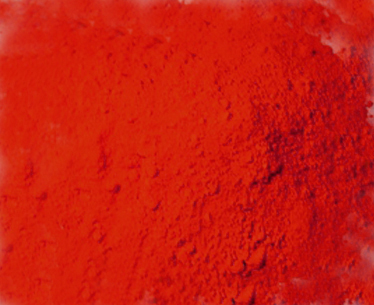The difference between organic pigments, dyes and inorganic pigments
2025-02-13
In the field of chemical industry, colorant is an extremely important substance, which can give various materials rich colors. As we all know, colorants are basically divided into organic pigments, dyes, inorganic pigments these three categories. Among them, organic pigments have shown a booming trend in recent years, and their applications in many fields have been expanding, gradually becoming a hot spot in research and production. So, what are the differences between organic pigments and the other two colorants, that is, dyes and inorganic pigments? This is a question worthy of further investigation.
Let's first look at the similarities and differences between organic pigments and dyes. Organic pigments and dyes are colored organic compounds, which is their essential property. From the point of view of chemical structure, the two are very similar, to what extent? There are even organic compounds that can be used both as dyes for specific applications and as organic pigments for other needs. However, despite such a close connection, organic pigments and dyes are really two distinct concepts, and the main difference between them is reflected in the application performance.
From the traditional use point of view, there are obvious differences between the two. The traditional use of dyes is to dye textiles and play an integral role in the textile industry. Imagine an ancient textile workshop where workers painstakingly dyed silk, cotton, or hemp fabrics in a variety of colors to make otherwise drab fabrics colorful. The principle behind this is that dyes have a special affinity for textiles, which is called directness. This affinity allows the dye to be adsorbed and fixed by the fiber molecules. For example, like a special key that fits precisely into a keyhole, the dye molecules bind tightly to the fiber molecules.
The traditional use of pigments is to color non-textiles, which cover many industrial materials, such as inks, paints, coatings, plastics, rubber, and so on. In the printing plant, the pigments in the ink provide rich colors for books, newspapers, and all kinds of printed matter; In the construction industry, pigments in paints and coatings give buildings a new look; In plastic products factories, pigments make plastic products colorful; In the production of rubber products, pigments also play an important role in decoration and identification. This is because the pigment has no affinity for all colored objects, and it cannot be directly combined with the colored object like the dye. So how does it stick to these materials? It mainly relies on the help of other film forming substances such as resins and adhesives to be able to combine with the colored object.
In the process of use, dyes and pigments also have different performance. When the dye is used, it is generally dissolved in the medium. For example, even disperse dyes or VAT dyes, which are relatively poor in water solubility, undergo a more complex process when dyeing. They must first dissolve in water from a crystal state into a molecular state, just as a solid ice cube melts into liquid water, before they can be dyed onto a fiber. This leads to an interesting phenomenon, that is, the color of the dye itself does not represent its color on the fabric, because during this process of dissolution and dyeing, the dye molecules interact with the fiber molecules, which may produce a change in color.
In the process of use, the pigment is insoluble in the medium, so it always exists in the original crystal state. This is like a tiny colored crystal, from beginning to end to maintain its original appearance.




